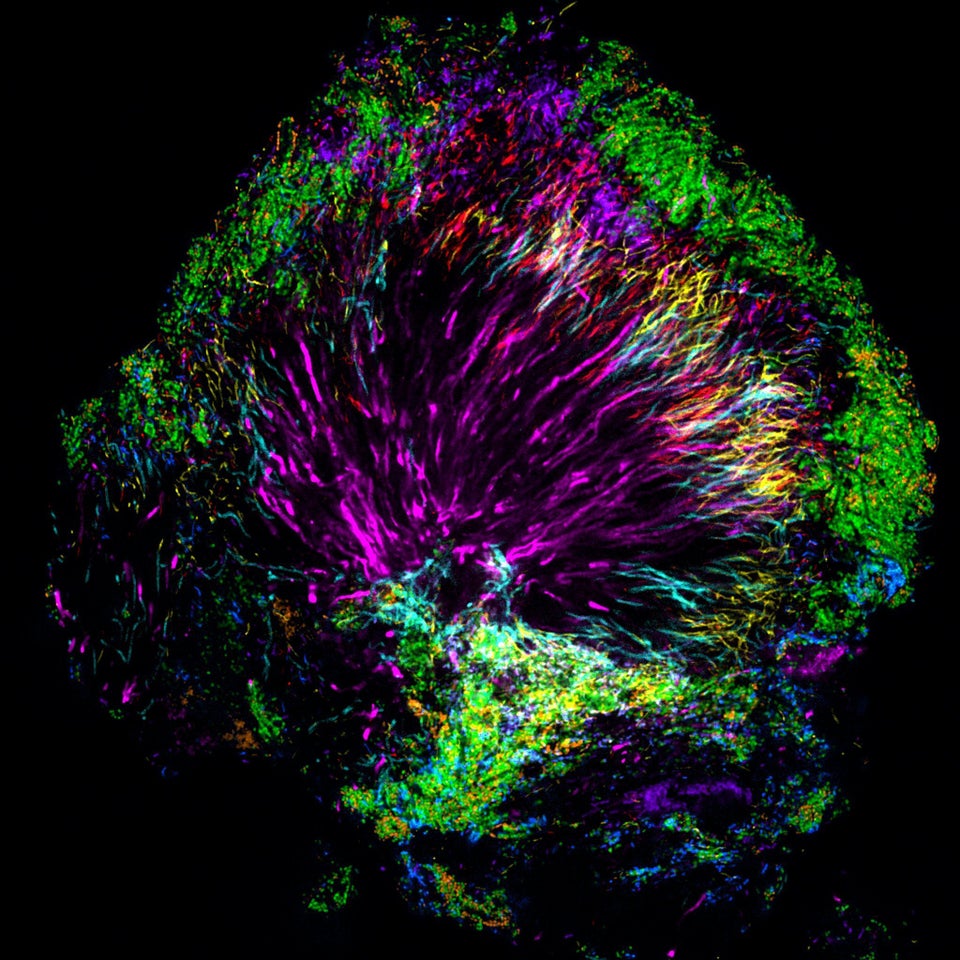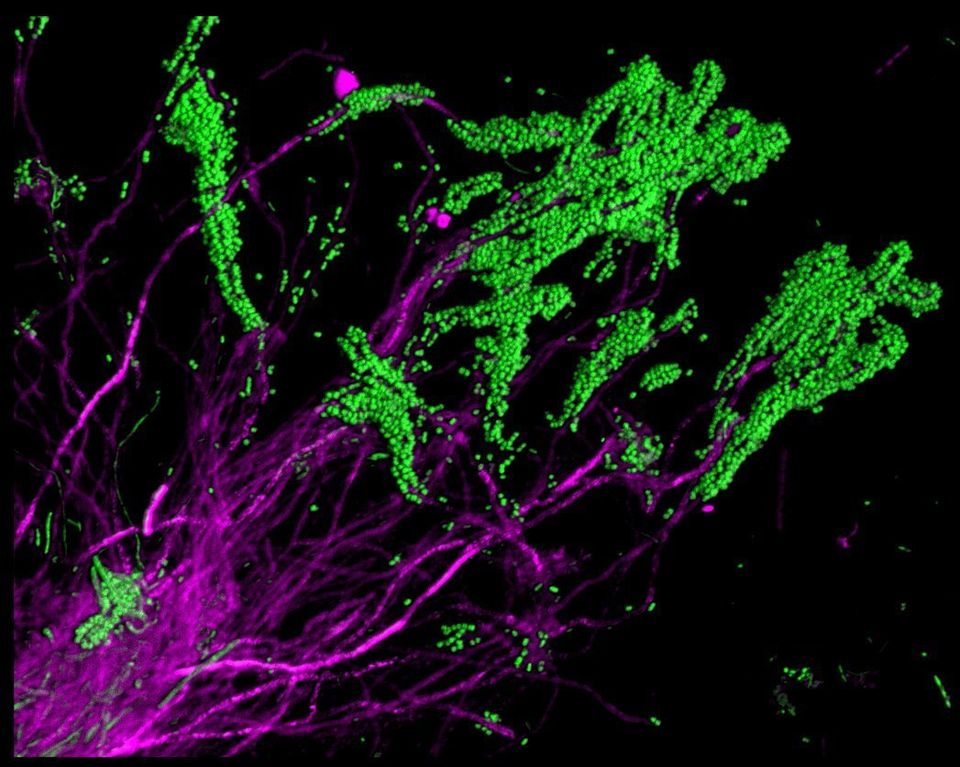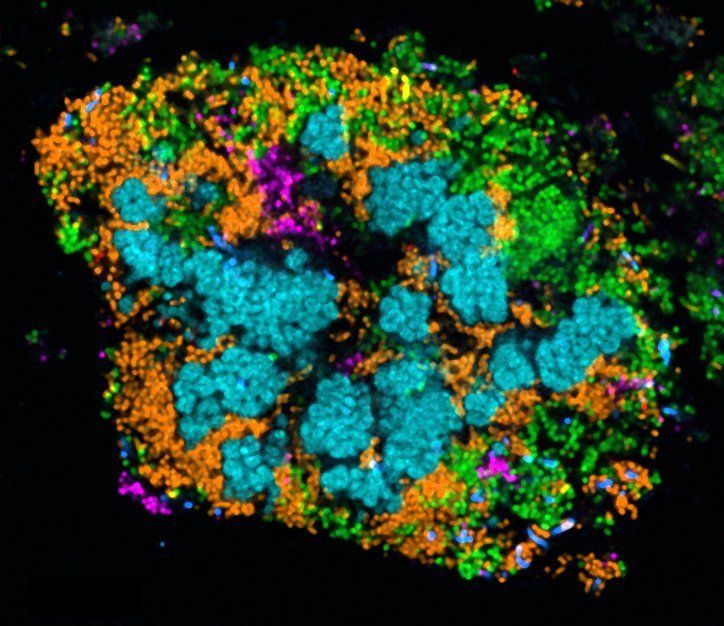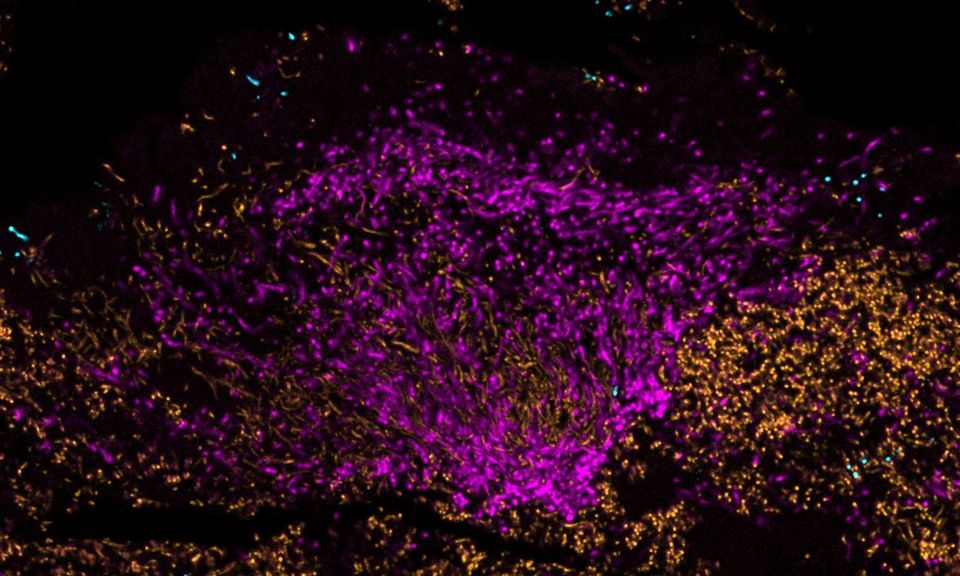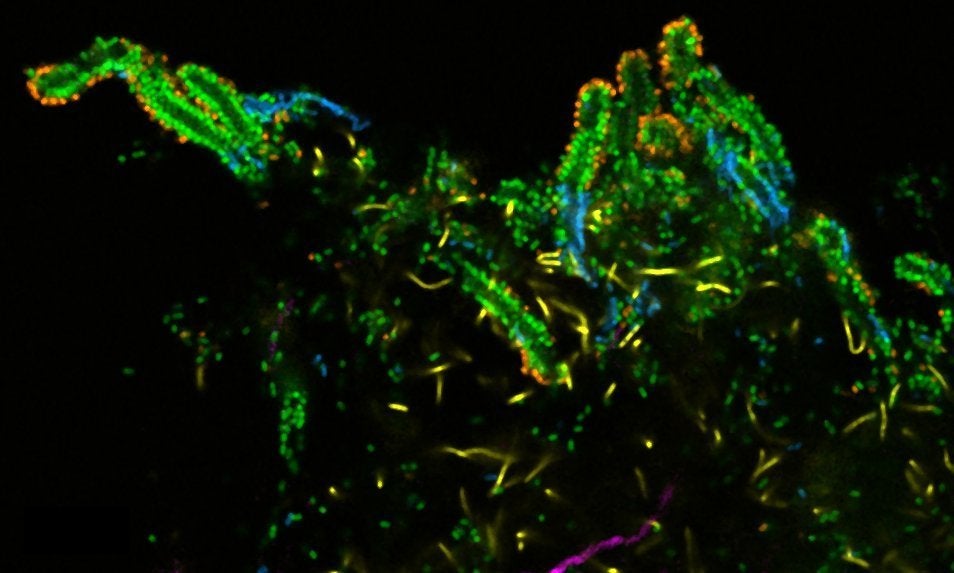Who knew the microbes in our mouths could look so magnificent?
A team of researchers in Massachusetts used a novel fluorescence imaging technique and DNA sequencing to build colorful maps of bacteria found in our teeth.
The images are not only stunning to look at, but also shed light on how various kinds of bacteria organize as colonies, Dr. Jessica Mark Welch, a co-author of the study and an associate research scientist at the Marine Biological Laboratory in Woods Hole, said in a statement.
"Microbes behave very differently depending on where they are and who they are next to," she said. "They will secrete entirely different sets of chemicals and metabolites depending on who their microbial neighbors are. So, if we want to accurately describe what these microbes are doing -- really, what they are -- we need to know where they are."
The researchers collected the bacteria from the dental plaque of 22 healthy men and women, National Geographic reported. They published their findings in the Proceedings of the National Academy of Sciences on Jan. 25.
The researchers concluded that the fluorescent imaging technology they used could be used again to map the microbes lurking in our guts and skin.
"Our research provides the map, which will allow us to answer important questions about the relationship between the bacteria and the body -- and ultimately help us to understand the effect on our overall health," said Dr. Gary Borisy, a co-author of the study and senior research investigator in the Forsyth Institute's department of microbiology.
Scroll down to see the complexity and beauty of mouth-dwelling microbes.
